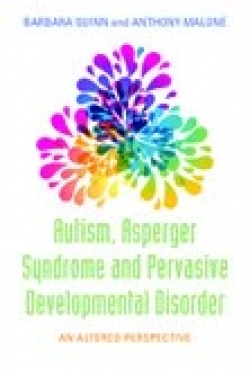Autism, Asperger Syndrome and Pervasive Development Disorder
An Altered Perspective
A diagnosis of autism spectrum disorder alters the life of any parent on the receiving end. An accurate label for a child’s worrying behavior means treatment and intervention; finally, parents can stop blaming themselves. But a diagnosis also means the end of the hope that a child is actually normal and will easily grow out of this difficult phase. Welcomed or dreaded, a diagnosis is always the beginning of a long journey of treatment and training.
Parents of the newly diagnosed may feel isolated and burdened; the new edition of Autism, Asperger Syndrome and Pervasive Developmental Disorder by Barbara Quinn and Anthony Malone offers answers, explanations, and—perhaps most importantly—a community of parents who’ve walked this same path.
The bulk of the book focuses on specific questions parents may have about their own child’s diagnosis. The authors begin with a discussion of normal development and the ways children might differ from this baseline, explaining, “Children with developmental disorders are not merely slow in obtaining skills. What happens in their developmental course is very different not just delayed.” Using anecdotal examples, they do an excellent job illustrating the difference between children with a diagnosis and children who are simply slower than average.
And where do parents go from there? Quinn and Malone thoroughly explain various options such as medical intervention, including drug therapies, and also educational programs that help children curb the behavior that gets in the way of learning, socializing, and communicating. Above all, readers are encouraged to remember that each child is unique and parents need to trust their instincts and educate themselves to best advocate for their children.
Much of the book is devoted to personal stories both by and about children with autism and Asperger Syndrome and their parents. Here readers will get a first-person perspective on what it’s like to see the world through the eyes of someone affected by developmental disorders.
Quinn and Malone, respectively Nurse Clinician at and Division Head for the Division of Developmental and Behavioral Pediatrics at Albany Medical College, strike the perfect tone in what could be considered a manual for parents of the newly diagnosed. They do not dismiss fear, anxiety, or sadness but explain that these are perfectly normal reactions and provide ample examples of parents who have run the gamut of emotions. Throughout the book, with precise, supportive wording, the authors encourage parents to trust themselves, listen to their children, and relish the people their sons and daughters grow to be.
Reviewed by
Andi Diehn
Disclosure: This article is not an endorsement, but a review. The publisher of this book provided free copies of the book and paid a small fee to have their book reviewed by a professional reviewer. Foreword Reviews and Clarion Reviews make no guarantee that the publisher will receive a positive review. Foreword Magazine, Inc. is disclosing this in accordance with the Federal Trade Commission’s 16 CFR, Part 255.

